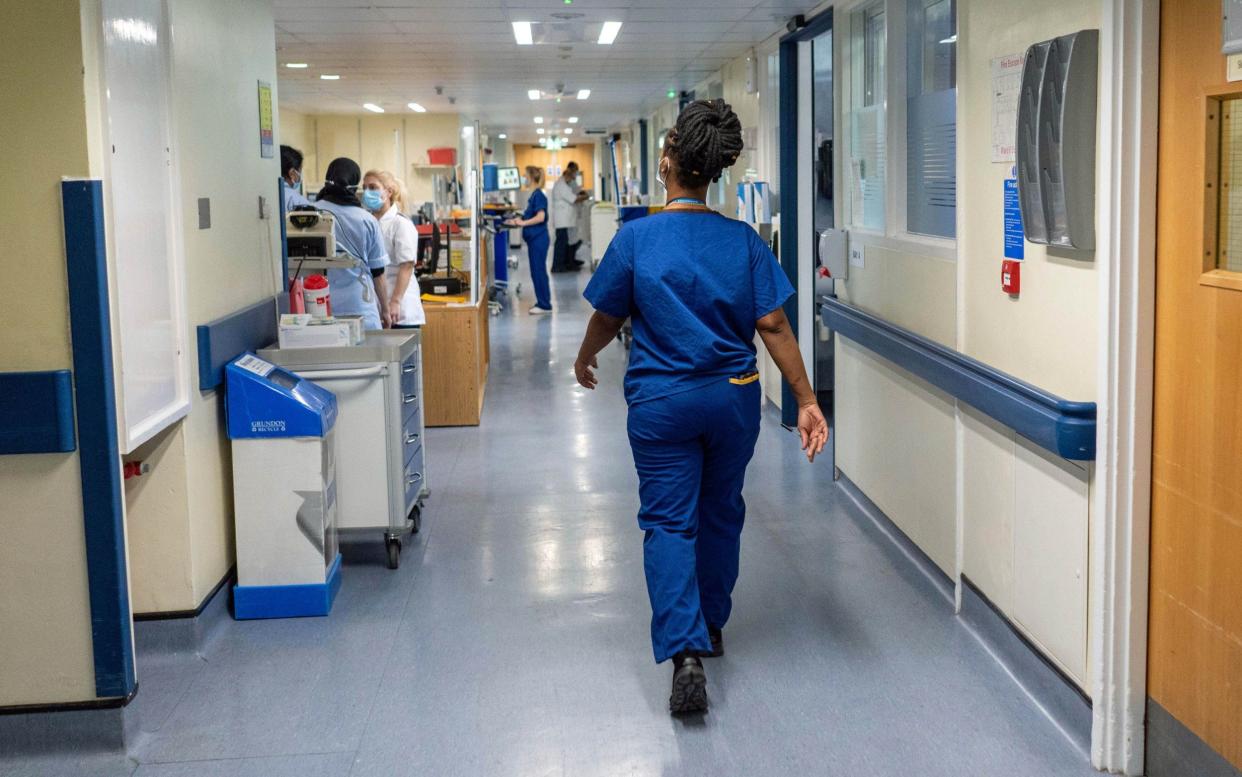NHS bed blockers at record high with one in seven fit enough to go home

- Oops!Something went wrong.Please try again later.
Bed blockers in NHS hospitals have reached a new record high with one in seven patients fit enough to be discharged.
More than 14,400 fit patients were stuck on hospital wards last week despite being medically fit to go home, the latest figures show.
It coincided with an influx of people being hospitalised with flu, with an average of 1,582 patients being treated each day, the highest figure this winter.
Health officials praised the roll out of “5,000 extra beds” across the NHS, which had been promised by ministers for this winter, and takes the total number available to just shy of 100,000, the NHS said.
But almost 96 per cent of these were in use in January, with the health service running at record levels of capacity despite the increase.
Saffron Cordery, the deputy chief executive at NHS Providers, said hospitals were “almost full to the brim” and “stretched to the limit week after week with no let-up”.
Dr Vicky Price, the president of the Society for Acute Medicine, said “bed capacity is nowhere near meeting demand” and that the number of people “stranded in hospitals remains relatively static”.
The 14,436 patients fit to be discharged was up by 2,000 on average each day, or 16 per cent, in just two weeks, and 25 per cent more than at the start of the year.
It is also higher than the previous record of 14,036 set around this time in 2023, and significantly higher than in previous years.
Amanda Pritchard, the NHS chief executive, said today’s figures “reveal why the NHS needed to grow its capacity, with more than 19 in 20 adult beds occupied”.
She said the extra beds alongside other measures including “virtual wards” and community response teams were “helping the NHS better manage increased winter pressures, significant demand, and rising numbers of patients with seasonal viruses”.
“We know NHS staff are working tirelessly to deliver the best possible care under real pressure,” Ms Pritchard said.
Virtual wards cost ‘twice as much’
It comes as a study found that treating patients on virtual wards – a flagship NHS policy to keep people out of hospital – cost twice as much as treating them in hospital.
Researchers said it was the biggest study of its kind, and found the virtual beds also led to more patients being readmitted.
Virtual wards allow patients to get hospital-level care at home, the NHS says, with people monitored remotely by a clinical team that conducts daily reviews.
The study by Wrightington, Wigan and Leigh Teaching Hospital Trust (WWL) in the North West and Lancaster University compared 318 patients in virtual wards with 350 patients in hospitals with similar characteristics, and found delivering the same care over 24 hours cost £1,077 on a virtual ward compared to £536 on a physical ward.
Study authors said it “raises concerns [over] the deployment of large-scale virtual wards without the existence of policies and plans for their cost-effective management.”
An NHS England spokesman said: “This limited study – which covers just one NHS trust – is misleading as it looks at a small number of patients during the programme’s first year, and the virtual ward is now able to do four times as much activity than then.
“While globally recognised research shows people who are treated at home recover at the same rate or faster than those in hospital, and that patients prefer to be treated and recover from the comfort of their own homes closer to family, friends, and carers, while freeing up hospital beds for patients that need them most.”
Martin Farrier, WWL director of digital medicine and the paper’s lead author, said the NHS response to the study was “odd”, adding: “This [is] the largest study that exists… and the first in the UK assessing their cost-effectiveness.
“It’s also worth noting that it would be very difficult to do the study across organisations [as] you can’t control variables. As such, the only way to increase the size of the study would be to do the work for multiple years.”

